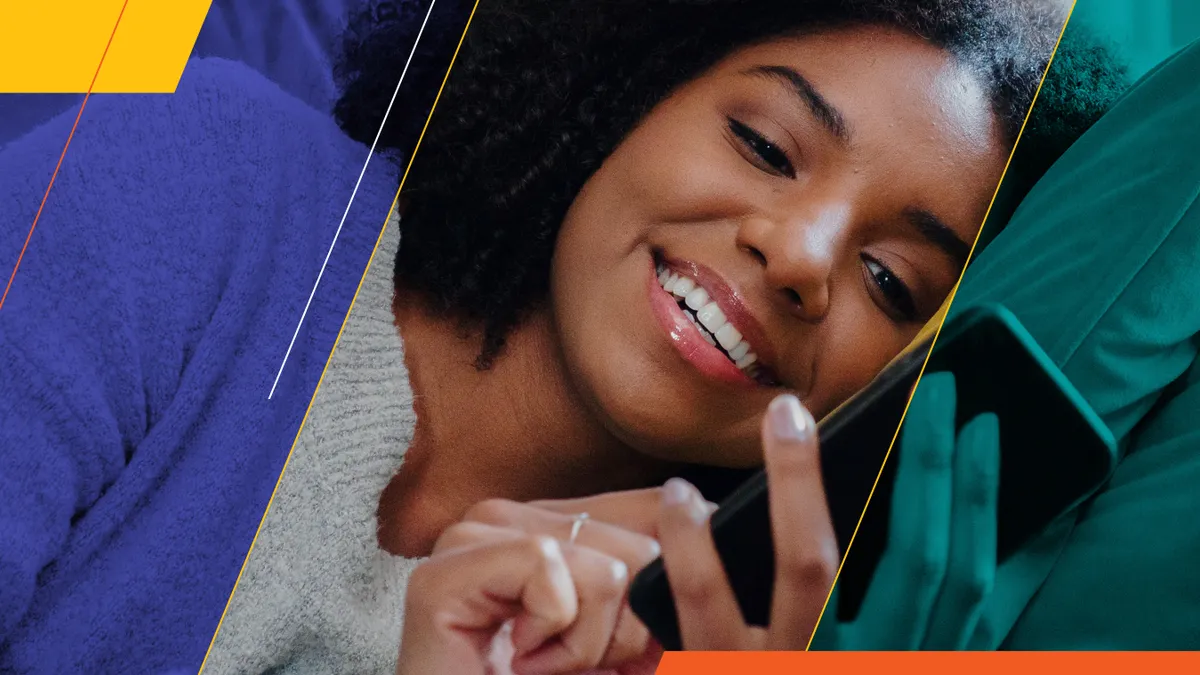Although online grocery shopping had been on the rise, the pandemic kicked it into high gear, leading to a blistering 54% growth in 2020. And while many shoppers appreciated the convenience, grocers are enthusiastic for a return to in-store shopping, given the complexity of picking and packaging the orders—work previously done by shoppers—and facilitating curbside or last-mile delivery.
At the same time, online buying gives retailers an unprecedented view into their customers' buying habits, allowing them to offer value-added services, like personalized promotions, cross-selling opportunities, recipes and more to reach consumers at their point of purchase decision.
What if they could blend this treasure trove of target-rich online insight with the in-store experience? Today, that's possible as grocers can harness the power of online capabilities to facilitate a more streamlined and targeted in-store experience and utilize in-store behaviors to personalize the shoppers online experience.
The benefits of hybrid shoppers
While e-commerce will remain a staple in grocery shopping, a return to the physical store is already underway. Nearly half of shoppers say they currently use a hybrid model, while 33% have returned to their local market, suggesting a steady return to normalcy and increased comfort with in-store shopping. Hybrid shoppers, who shop both in-store and via digital channels, are twice as valuable to the retailer as those who shop solely in-store.
This shift to embrace hybrid shoppers can help grocers better meet their customer service and profit goals in several ways. For example, an improved app experience can re-order a list to match the layout of the store, thus mimicking the online experience of seamlessly adding items to the cart. "Helping guests navigate more efficiently through the store greatly improves the shopping experience," says Rob Weisberg, senior vice president of eCommerce for Inmar Intelligence. "It also increases the chances they'll find everything on their list, which can boost profitability and satisfaction, but even more importantly it allows grocers to create a more customized experience."
How grocers can improve the hybrid shopper experience
Merchants realize that the convenience of shopping from the couch and receiving supplies on the doorstep—or swinging by to pick up an order on the way home from work or soccer practice—is awfully enticing. Recognizing that people are time-starved and reimagining the hybrid experience to be more convenient will allow grocers to bolster loyalty.
That's because integrated systems can weave together a picture of a particular consumer's habits and preferences, gleaned from data gathered from both online and offline purchases through tracking their order history and loyalty card purchases. So someone with a nut allergy could be directed to the appropriate aisle or be shown a recipe that incorporates their family’s needs.
Stores can deliver personalized offers to consumers while they're shopping online that they can redeem on their next trip to the store or order specialty products to have on hand the next time this particular guest visits. The payoff can be substantial: Inmar research finds that 90% of consumers believe a brand's ability to personalize their shopping experience impacts the amount they spend with that brand.
Providing digital support bridges online and in-store shopping
While it's much easier for grocers to follow consumers online than peek into their actual baskets, today there is a way to blend data from both with Inmar's ShopperSync platform, which offers a holistic solution to help grocers win in today's omnichannel environment. "As we see the trend of people returning to the store, they are carrying over the behaviors they're used to from shopping online," Weisberg explains.
Supporting a more streamlined experience is vital to capture the loyalty of consumers who don't differentiate between an online or in-store transaction. "Grocers need to be similarly agnostic about where the purchase is originating and make sure they are meeting shoppers' expectations through all channels," he says.
"Given the massive influx of digital buyers during the COVID crisis, there is now a plethora of data available to retailers to make the hybrid shopper experience smarter and more personalized, as retailers recognize they are engaging with the same individual, no matter what channel they use to fulfill their order," Weisberg says. "The blurring of online and in-store is here—and here to stay."






